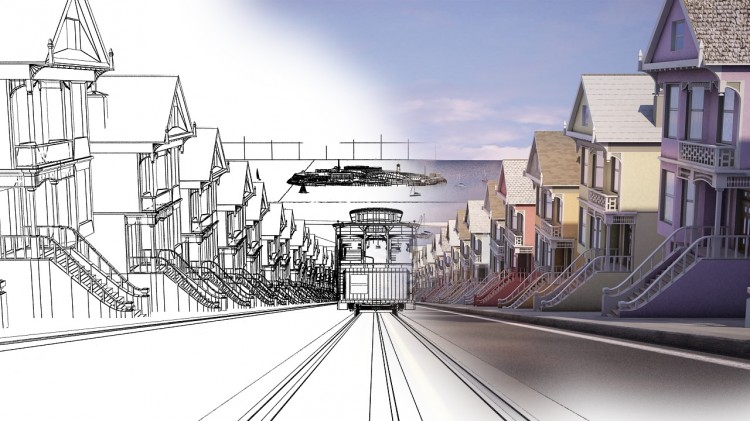You may attend your next trade conference in a bathrobe, grasping a mug of coffee and wearing slippers, and get more out of it than if you had attended in person with your snazzy suit.
It’s commonplace to see streaming video of conferences online for anyone who couldn’t make it. But the full digital conference is also coming along strong—whether to save costs amid the economic downturn or to make it less of a burden for attendees by doing away with delayed flights and tight schedules.
Going digital—rather than with a traditional, in-person conference hall—saves about 90 percent in costs and is being picked up by Fortune 400 companies and some of the largest accounting firms in the world, according to data collected by digital conferencing company ON24.
Audience participation also tends to be better since people are more apt to ask questions when they’re not under the watchful eye of an audience. Even if you’re timid, “you’re braver in the virtual world,” said ON24 CMO Denise Persson in a phone interview.
ON24 holds the annual VUE digital conferences, showing off the perks of virtual venues. Given that the technology is relatively new, one of the problems it faces is a general weariness of whether the system would be usable by the full range of attendees.
In their attempt to break this concept, ON24 brought the bearded San Francisco Giants pitcher Brian Wilson on board as the event host and came up with the slogan “Fear the beard, not the technology” for the VUE2011 conference on Nov. 17.
There are several types of virtual meetings. Some use multiplayer video games including “Second Life” or similar programs, such as “OpenSim,” for their venue. The games let gamers take control of 3-D avatars in massive, customizable in-game worlds, but have mixed results when it comes to holding large-scale, professional meetings.
Although “Second Life” has proven better than some options, like desktop video and text-mediated conferencing, it is not without bugs. A 2010 Watson Research Center study found some attendees have trouble figuring out the system—forgetting to mute their microphones and interrupting speakers, or badgering other attendees on how the program works. There is also general uncertainty over proper etiquette when video games move from entertainment to professional business meetings.
The study states, “There is no doubt that a small number of people are naturally inclined either toward enthusiasm or skepticism about virtual world technology,” but “In between are the vast majority of users who will participate because they feel obligated or find it kind of interesting or fun, but mostly because it’s what’s on offer and better than not having a meeting at all.”
ON24 is taking a different approach, however, by finding that middle space between a full, digital world and a simple video feed. They do not allow free movement like a video game—which keeps people from spending the conference figuring out controls and where everything is—but they also keep the detailed venues of a digital world, which keeps things interesting while also making it more official.
They have built virtual hospitals for pharmaceutical conferences and digital schools for educators. For the upcoming VUE2011 conference, they built 3-D, digital models of some key places in San Francisco—including the Golden Gate Bridge, Chinatown, and Union Square that a digitized Brian Wilson will guide each attendee through.
According to Persson, the fancy graphics are for more than just looks—attendees pay more attention during the event when the virtual venues look nice.
“The reason we use the iPhone so much is we really like the experience of using it—if it’s hard to use you don’t use it,” Persson said. “If you create an environment that makes people curious to explore, then you accomplish your goal.”
These digital venues come equipped with both rooms for speakers and digital lobbies for attendees to chat. Being digital, ON24 has also built social media directly into the system, allowing anyone to Tweet or post to Facebook from the conference window.
Persson said that while she does not see physical conferencing becoming obsolete, digital will likely become more common and more events will have both a physical and digital side. “I think in a couple years it will be the standard. All events will have a virtual component to it,” she said.



![[LIVE Q&A 04/30 at 10:30AM ET] Major Government Policy on the Internet Passed](/_next/image?url=https%3A%2F%2Fimg.theepochtimes.com%2Fassets%2Fuploads%2F2024%2F04%2F29%2Fid5640068-CR-TN_REC_0430-1080x720.jpg&w=1200&q=75)


